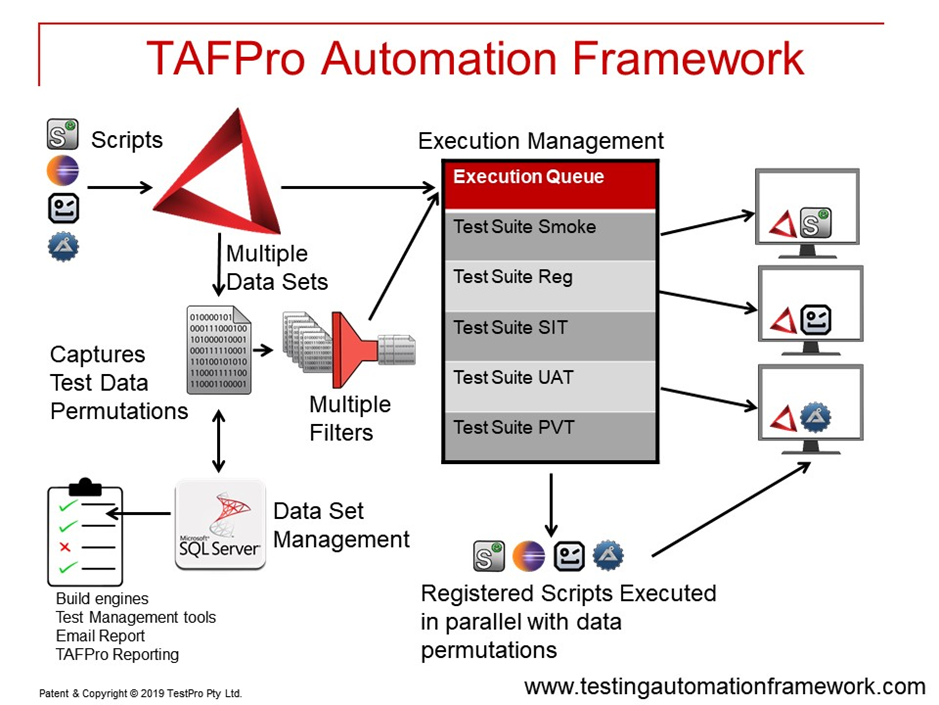Automation Framework Implementation

The key aspects of TestPro’s automation architecture and implementation approach are:
Review
- Applications to be tested and test objectives
- The type of test user interface required e.g. spreadsheet, or GUI/database driven
- Any automation tool used
Define
- Automation framework architecture that is efficient, scalable and maintainable
- Implement a library of ‘adapter’ test scripts that verify specific functions in the AUT
Implement
- Demonstrate scripts are implemented using the automation tool selected by the client
- Ensure all system test automation documentation is complete and handed over to the Client
Maintain
- Identify adapter scripts reduced test maintenance, so that most of the functional tests will not require changes
- When the application under tests change, the changes are typically accommodated within the library of adapter scripts
Support & Optimisation
- Provide a simple, non-technical user interface to the function library so that business users can develop tests.
- Typically this interface will be spreadsheet, or GUI/database driven.
Why Are Test Automation Frameworks Needed?
When implemented correctly, automated test tools deliver on their promise of more thorough and efficient testing, achieved with less manual effort. However, implementing a significant suite of automated tests is a task comparable to a significant software development project.
With larger scale test automation, the same challenge exists with developing tests as it does with developing software. The primary challenge is to architect a framework for a suite of tests that is efficient, scalable and maintainable.
In addition, many clients want a less technical, user interface to the test environment, so that business users are able to execute tests in a context they are familiar with, such as a spreadsheet, or simple GUI.
Another factor is the availability of business users with domain knowledge. It is important that business users validate the business process flows of a new or changed system are correct and complete.
However, obtaining sufficient time from these business users is always challenging because of their BAU commitments, especially if a succession of releases or upgrades have to be tested.
Key objectives of an automation framework are:
- To enable reuse and sharing of automation scripts to improve efficiency and scalability
- To manage test data and enable tests to use a range of different data.
- To reduce the test maintenance overhead.
- To provide a non-technical user interface for business user testers.
- To capture and leverage the domain knowledge of business users into a set of regression tests that can be executed repeatedly without needing the business users to be present.
TAFPro Automation Framework

Not having a framework is risky business!
Without a suitable architecture and framework, many test teams hit a ‘wall’ where the effort to change and maintain their portfolio of tests becomes so large that this consumes the bulk of their available time. The end result is that test coverage growth stops, or reverses under the weight of this maintenance effort.
